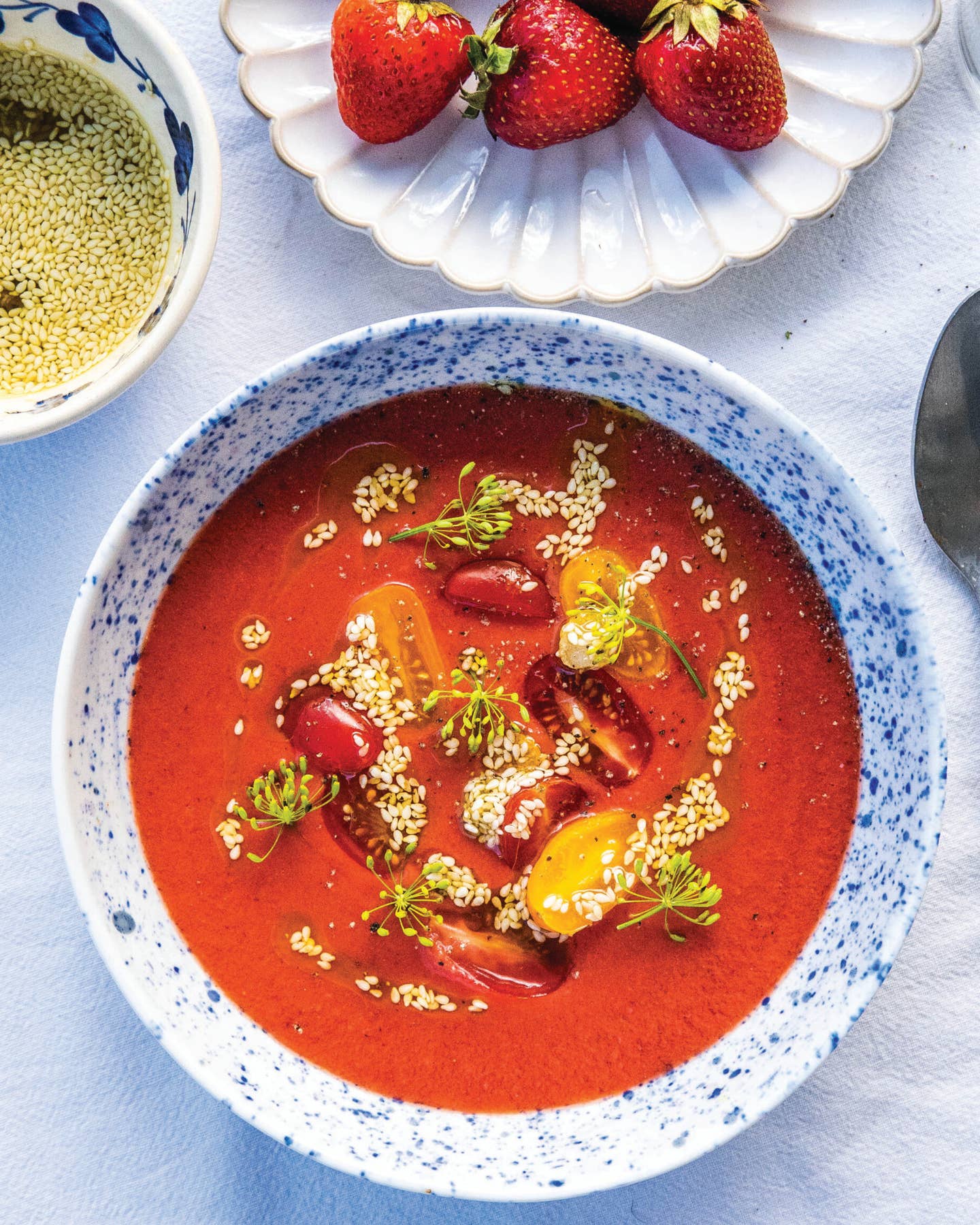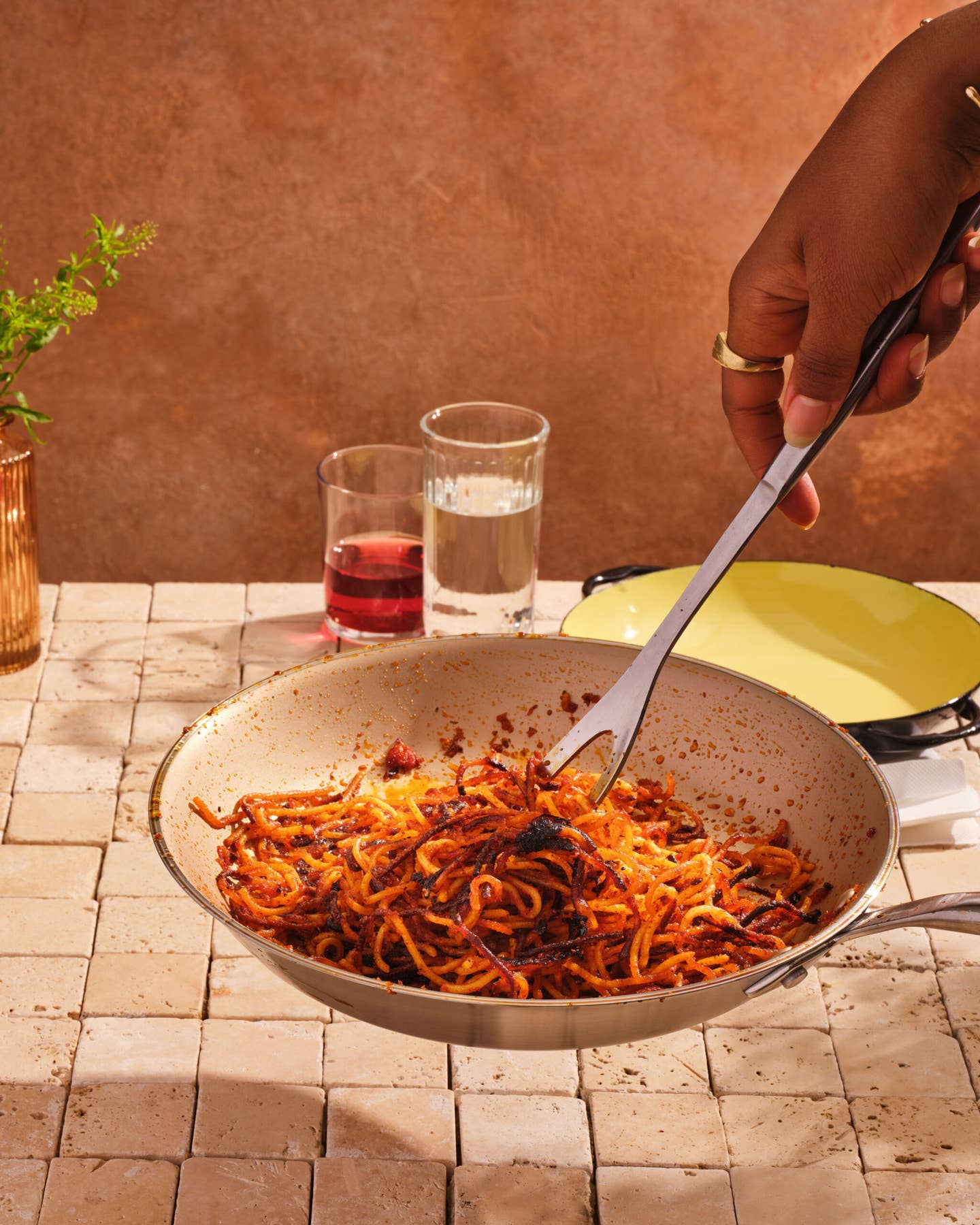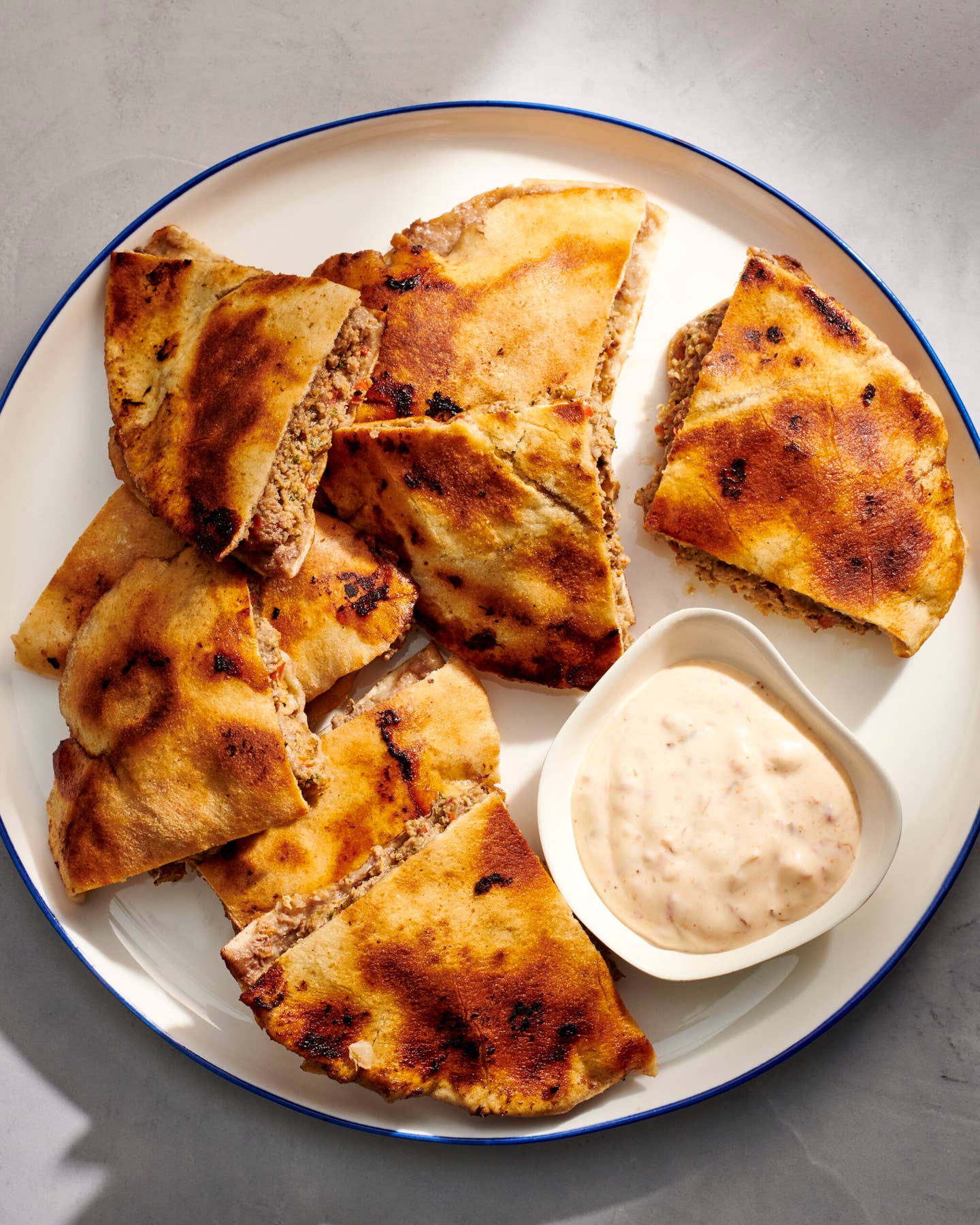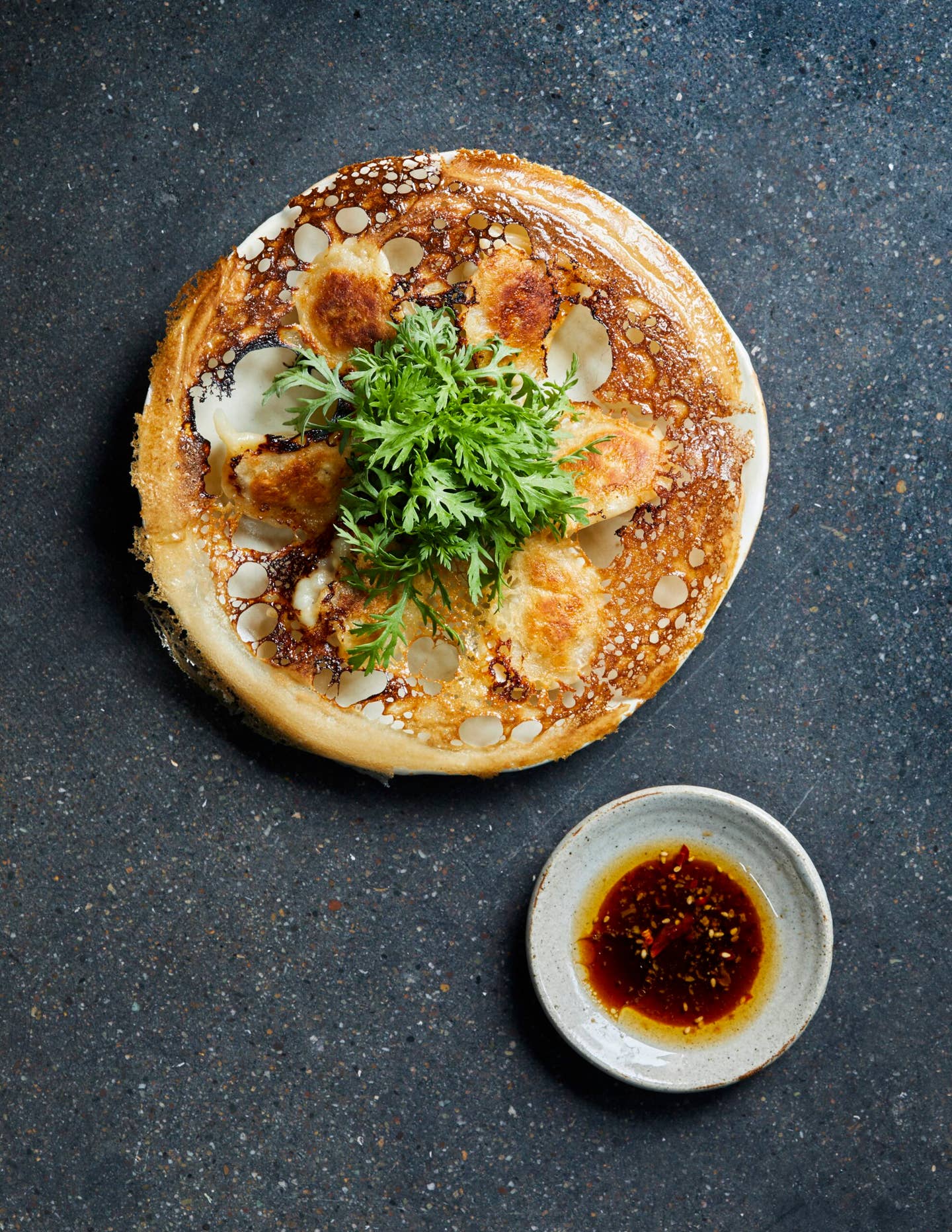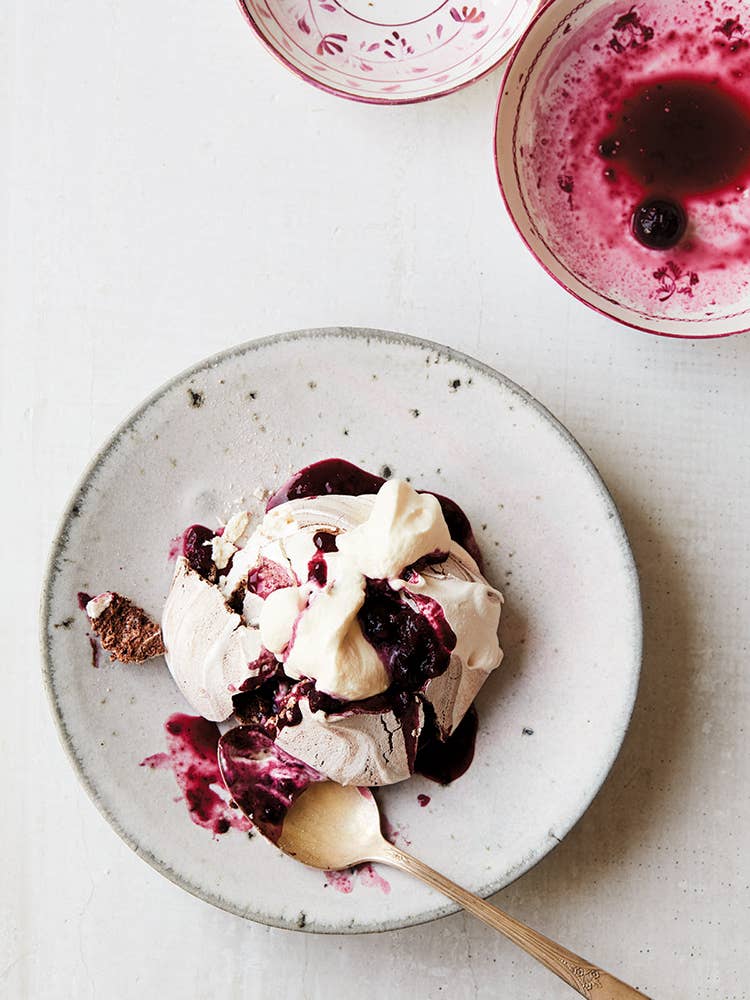
French Meringue Is the Dessert That Will Make You Look Like a Star
Impressive doesn’t have to mean hard. Here’s an easy, complete guide to making meringue
I stumbled on an old video the other day of my mother and daughter making meringue together. Mom was visiting us in Brooklyn from Sydney, and my daughter Opal must have been around three years old. Mom’s working the handheld beaters, and Opal is standing on a stool next to her, spooning in the caster sugar a tablespoon at a time, as we always do. I learned to make meringue in a similar fashion from the same woman: one step at a time, slowly being given more responsibility until I could fly solo. That’s how you master meringue, step by step, and ideally with someone guiding you through the secrets.
As an Australian, learning to make meringue is a rite of passage, and some tips for its success are passed down along the way. The pavlova, a cake-shaped meringue topped with whipped cream and usually fruit, is the unofficial national dessert that is rolled out for nearly every occasion—holidays, birthdays, and dinner parties included. Meringue can be homey or high end, and it never seems to go out of vogue. There are no limitations other than one's imagination. It is essentially a blank canvas. Meringue is also a great gluten-free option, but more importantly, I have yet to meet someone who isn't impressed by a well-made, beautifully decorated meringue.
In the summertime I'll decorate a pretty pavlova with a medley of berries or stone fruits. If I can get my hands on passion fruit—its tang and tartness cut beautifully through a pavlova's sweetness—I love to smother everything from the juice to the seeds over the top. Dollops of yogurt whipped cream (a recipe in my book Simple Cake), fruit curd, or a combination of the two is never a bad idea. In the cooler parts of the year, I'll make individual meringues, their batter swirled with chocolate or ground hazelnuts before baking. I'll plop some Nutella or chocolate whipped cream on top and serve chocolate shavings and poached fruit on the side.
Meringue is affordable and doesn’t take long to bake. It can sometimes be temperamental, but if you know and follow some tips, meringue can become a dessert you successfully whip up on a whim.
Tips and Tricks for Meringue Success
- Meringue whips up best in a squeaky clean bowl in which there's no residual oil or fat left behind to disturb or deflate it. Thoroughly clean your mixing bowl and whisk attachment before you begin, and consider wiping them down with a splash of white vinegar.
Avoid letting any egg yolk—even a small amount—into meringue batter, which can also deflate it. I learned from Shirley O. Corriher's book BakeWise to use the three-bowl method to separate the eggs. Crack the egg and drop the white into one small bowl, and if the yolk didn't break, and the white is uncontaminated, transfer the white to the mixing bowl for beating. If it gets contaminated, save it for breakfast and start again.
Meringue deflates and won't stay crisp in humidity. So on significantly muggy days, either close the windows and put the air-conditioning on while you're beating, baking, and storing the meringue, or choose another dessert.
Standard granulated sugar will work in meringues, but I prefer a fine sugar which whips into egg whites easily. Consider using caster sugar, or grinding granulated sugar in a food processor until very fine.
Be careful not to overbeat the egg whites. This can rob too much of the moisture from the meringue, and it will not expand as much in the oven. If the egg whites start to look lumpy instead of glossy and smooth, they've been overbeaten.
Meringue expands slightly in the oven, so be sure to leave ample room between dollops and build the meringues more upward than outward.
Meringue has a tendency to crack, especially from shifts in temperature. (The good news is: it's delicious whether it is cracked or perfectly smooth.) Avoid an abrupt change in temperature by leaving the meringue in the oven to cool after it's baked.
Keep Reading
Continue to Next Story





